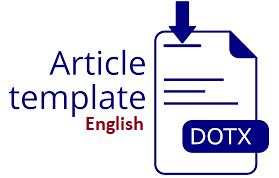Analisis Sentimen Masyarakat Mengenai Aplikasi Shopeefood Menggunakan Chi Square dan Metode Naive Bayes Classifier
DOI:
https://doi.org/10.30865/klik.v3i6.927Keywords:
Chi-Square; TF-IDF; Naïve-Bayes; Shoope-Food; TwitterAbstract
In April 2020, Shopee launched a delivery service known as ShopeeFood. This service has grown into a large service platform that is in demand by various age groups. Regarding the ShopeeFood phenomenon, the public provides feedback in the form of ratings and opinions on various social media, one of which is Twitter media. The steps taken to understand the perceptions or sentiments of the ShopeeFood community, data are collected through social media and analyzed using the Naive Bayes Classifier method with the Chi feature. Rectangle. Tweet data is retrieved via the Twitter API using key terms related to ShopeeFood. The dataset contains 1050 data divided into three sentiment classes: positive, negative and neutral. The test results use Chi Square on the Naive Bayes Classifier method with a test ratio of 90:10% and produces an accuracy value of 65.71%, a precision value of 95,00 %, and the recall value is 90,00% and the test results use TF-IDF with a test ratio of 90:10% and produce an accuracy value of 79.05%, a precision value of 95,00%, and a 90,00% recall value. Based on the research results, it can be concluded that the TF-IDF feature gets higher accuracy than the Chi Square feature in the Naive Bayes Classifier method and is successful in classifying tweets with positive, negative, and neutral sentiments.
Downloads
References
F. S. Mufidah et al., “Analisis Sentimen Masyarakat terhadap Layanan Shopeefood Melalui Media Sosial Twitter dengan Algoritma Naïve Bayes Classifier,” vol. 7, no. 1, pp. 14–25, 2022, doi: 10.33633/joins.v7i1.5883.
V.A.R.Barao, R.C.Coata, J.A.Shibli, M.Bertolini, and J.G.S.Souza, “Perbandingan Kinerja Metode Machine Learning Antara Model Naive Bayes Dan K-Nearest Neighbor Terhadap Persepsi,” Braz Dent J., vol. 33, no. 1, pp. 1–12, 2022.
R. Nuryanti, “ShopeeFood, Banjir Diskon Makanan Online Konten ini telah tayang di Kompasiana.com dengan judul ‘ShopeeFood, Banjir Diskon Makanan Online’, Klik untuk baca: https://www.kompasiana.com/rahmanuryanti1985/60c4e26dd541df78322328d2/shopeefood-banjir-diskon-mak,” 2021, [Online]. Available: https://www.kompasiana.com/rahmanuryanti1985/60c4e26dd541df78322328d2/shopeefood-banjir-diskon-makanan-online.
A. Khomariyah, “Peluang Bisnis Makanan dan Minuman di Shopee Food Bagi UMKM,” pp. 1–10, 2021.
F. Javier, “Layanan Pesan Antar Makanan Paling Banyak Digunakan,” 2021, [Online]. Available: https://data.tempo.co/data/1295/gofood-platform-pesan-antar-makanan-paling-banyak-digunakan.
J. HU, W. XU, J. GUO, and W. DENG, “Study on feature selection methods in Chinese text categorization [J],” Study Commun., vol. 3, no. October, p. 014, 2005, [Online]. Available: http://en.cnki.com.cn/Article_en/CJFDTOTAL-GTXY200503014.htm.
G. P. Kawani, “Implementasi Naive Bayes,” J. Informatics, Inf. Syst. Softw. Eng. Appl., vol. 1, no. 2, pp. 73–81, 2019, doi: 10.20895/inista.v1i2.73.
A. Z. Amrullah, A. Sofyan Anas, and M. A. J. Hidayat, “Analisis Sentimen Movie Review Menggunakan Naive Bayes Classifier Dengan Seleksi Fitur Chi Square,” Jurnal, vol. 2, no. 1, pp. 40–44, 2020, doi: 10.30812/bite.v2i1.804.
We Are Social, “Data Reportal?: 2021 Indonesia. We Are Social & Hootsuite,” 2021. https://datareportal.com/reports/digital-2021-indonesia (accessed Jul. 05, 2022).
E. Edwin, “Aplikasi Assesment Kebijakan Pemerintah Terkait Operasi Ojek Online Di Masa Pandemi (Covid-19) Menggunakan Algoritma Naïve Bayes Classifier,” J. Algoritm. Log. dan Komputasi, vol. 3, no. 2, pp. 299–307, 2021, doi: 10.30813/j-alu.v3i2.2651.
W. Yulita et al., “Analisis Sentimen Terhadap Opini Masyarakat Tentang Vaksin Covid-19 Menggunakan Algoritma Naïve Bayes Classifier,” Jdmsi, vol. 2, no. 2, pp. 1–9, 2021.
H. Annur, “Klasifikasi Masyarakat Miskin Menggunakan Metode Naive Bayes,” Ilk. J. Ilm., vol. 10, no. 2, pp. 160–165, 2018, doi: 10.33096/ilkom.v10i2.303.160-165.
M. Z. Farhan, “Analisis Sentimen Layanan Shopeefood Pada Twitter Dengan Metode K-Nearest Neighbor , Support Vector Machine , Dan,” J. Ilm. Inform., vol. 7, no. 2, pp. 95–106, 2023.
B. R. Aditya, “Penggunaan Web Crawler Untuk Menghimpun Tweets dengan Metode Pre-Processing Text Mining,” J. INFOTEL - Inform. Telekomun. Elektron., vol. 7, no. 2, p. 93, 2015, doi: 10.20895/infotel.v7i2.35.
D. Duei Putri, G. F. Nama, and W. E. Sulistiono, “Analisis Sentimen Kinerja Dewan Perwakilan Rakyat (DPR) Pada Twitter Menggunakan Metode Naive Bayes Classifier,” J. Inform. dan Tek. Elektro Terap., vol. 10, no. 1, pp. 34–40, 2022, doi: 10.23960/jitet.v10i1.2262.
F. Ratnawati, “Implementasi Algoritma Naive Bayes Terhadap Analisis Sentimen Opini Film Pada Twitter,” INOVTEK Polbeng - Seri Inform., vol. 3, no. 1, p. 50, 2018, doi: 10.35314/isi.v3i1.335.
F. Deviana, “Algoritma Stemming untuk Baso Palembang Berbasis Aturan Tata Bahasa,” 2019.
S. Anisah, A. S. Honggowibowo, and A. Pujiastuti, “Klasifikasi Teks Menggunakan Chi Square Feature Selection Untuk Menentukan Komik Berdasarkan Periode, Materi Dan Fisikdengan Algoritma Naivebayes,” Compiler, vol. 5, no. 2, pp. 59–66, 2016, doi: 10.28989/compiler.v5i2.171.
N. Y. Septian, “Data Mining Menggunakan Algoritma Naïve Bayes Untuk Klasifikasi Kelulusan Mahasiswa Universitas Dian Nuswantoro,” J. Semant. 2013, pp. 1–11, 2009.
H. Mustofa and A. A. Mahfudh, “Klasifikasi Berita Hoax Dengan Menggunakan Metode Naive Bayes,” Walisongo J. Inf. Technol., vol. 1, no. 1, p. 1, 2019, doi: 10.21580/wjit.2019.1.1.3915.
Bila bermanfaat silahkan share artikel ini
Berikan Komentar Anda terhadap artikel Analisis Sentimen Masyarakat Mengenai Aplikasi Shopeefood Menggunakan Chi Square dan Metode Naive Bayes Classifier
ARTICLE HISTORY
Published: 2023-06-24
Abstract View: 11 times
PDF Download: 6 times
Issue
Section
Copyright (c) 2023 Muhammad Rizky Ramadhan, Elvia Budianita, Iwan Iskandar, Muhammad Affandes

This work is licensed under a Creative Commons Attribution 4.0 International License.
Authors who publish with this journal agree to the following terms:
- Authors retain copyright and grant the journal right of first publication with the work simultaneously licensed under Creative Commons Attribution 4.0 International License that allows others to share the work with an acknowledgment of the work's authorship and initial publication in this journal.
- Authors are able to enter into separate, additional contractual arrangements for the non-exclusive distribution of the journal's published version of the work (e.g., post it to an institutional repository or publish it in a book), with an acknowledgment of its initial publication in this journal.
- Authors are permitted and encouraged to post their work online (e.g., in institutional repositories or on their website) prior to and during the submission process, as it can lead to productive exchanges, as well as earlier and greater citation of published work (Refer to The Effect of Open Access).















